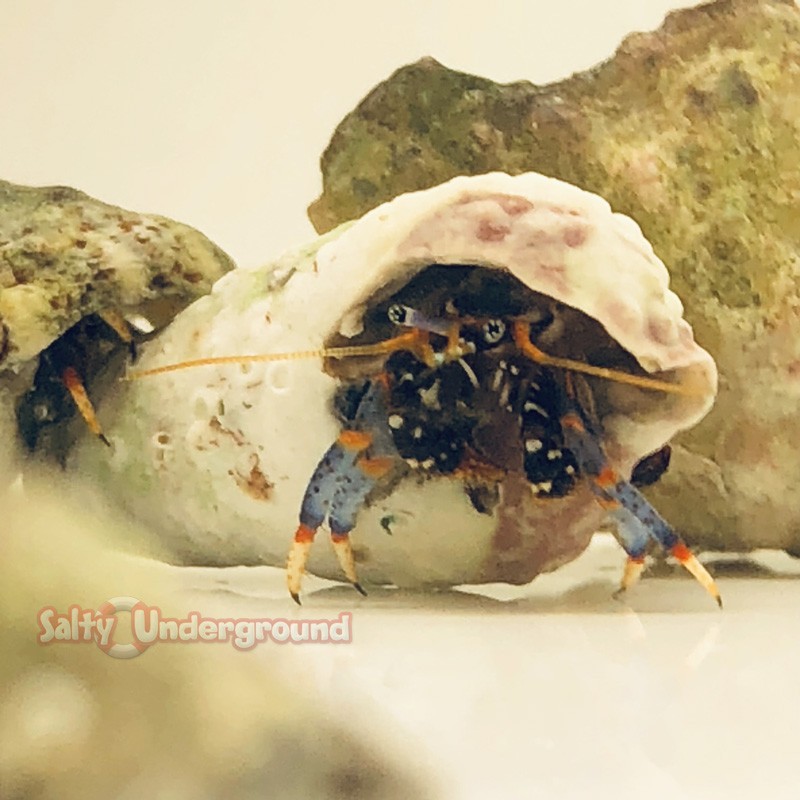





Great cleaner!

Shipping and Returns policy

Security policy

Live Arrival Guarantee
The Blue Legged Hermit Crab, also sometimes called the Dwarf Blue Leg Hermit Crab, will quickly eat filamentous algae and uneaten fish food. These small crabs are easy to keep. This hermit crab, Clibanarius tricolor, has blue legs with red banding. You won't be able to identify it by its shell as it will commonly steal a snail shell or kill another hermit crab for its shell. Clibanarius hermit crabs all have claws of equal size. It will usually grow to approximately 1 inch long. Its small size enables it to clean inside nooks and crannies other crabs are unable to reach. In nature, you can find C. tricolor in the Caribbean Sea on sand, mud bottoms, seagrass flats, and anywhere from the tide line to water up to 300ft deep. They will turn over and aerate your substrate while feeding on cyanobacteria, seaweed, green hair algae, and other detritus like plants and animals. This is a great addition for any aquarium looking for alternative methods to mechanical cleaning.

Great cleaner!